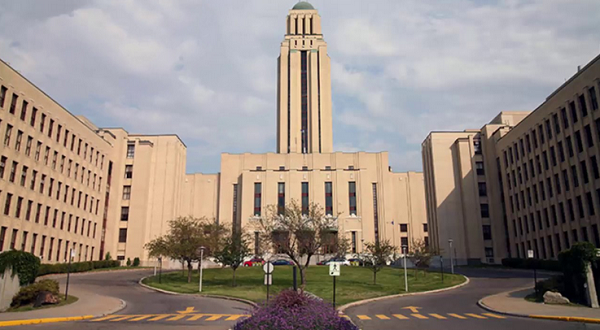Taiwan’s strongest earthquake in almost 25 damages buildings
Taiwan’s strongest earthquake in 25 years left at least seven people dead and hundreds injured when it rocked the island Wednesday, collapsing buildings and sparking tsunami warnings around the region.
The 7.2-magnitude quake hit off the coast of eastern Hualien County, where the worst effects were felt. As of Wednesday afternoon local time, rescuers were still searching for dozens of people trapped in collapsed and damaged buildings, with at least 100 structures affected.
Transport across Taiwan was disrupted, with subway and train lines halted, roads blocked and flights cancelled, though airports had resumed operation by the afternoon.
Tremors were felt as far away as Shanghai, almost 800 kilometres to the north, and multiple Chinese provinces paused travel on high-speed rail lines for safety checks. Coastal communities in the Philippines and Japan were put on high alert for tsunamis, with large waves striking Okinawa, though without causing any severe damage.
Wednesday’s earthquake was the strongest to hit Taiwan since 1999, when a 7.6-magnitude tremor killed around 2,400 people and destroyed or damaged 50,000 buildings.
That quake struck near the centre of the island, whereas Wednesday’s epicentre was in the ocean east of Hualien, Taiwan’s largest county by area but among its least populated, with most people concentrated in small towns along the coast.
Liao Che-wei, director of the Central Weather Administration’s Seismology Center, told state broadcaster TaiwanPlus standards adopted in the wake of the 1999 quake may have also played a part.
“Regulations for buildings’ seismic resistance were significantly updated,” he said. “There are stricter rules about construction methods and materials.”
Taiwan sits on the Pacific Ring of Fire, which stretches 40,000 kilometres from East Asia to the western coast of the Americas, and includes some of the world’s most active volcanoes and earthquake zones, a result of multiple tectonic plates smashing into each other.
Because of this, the island is regularly subject to small tremors, and schools and businesses hold drills to train people on how to respond.
Quakes close to Wednesday’s scale are nevertheless “relatively rare,” Mr. Liao said. “It was a very dramatic earthquake.”
Hualien is known for its spectacular scenery, including Taroko Gorge, one of the island’s top tourist spots. According to the government-run Central News Agency, several of those killed were struck by falling rocks while hiking in Taroko National Park. Roads and tunnels across Hualien were also blocked by landslides and debris, leaving traffic at a standstill throughout much of the county and hampering rescue efforts.
Aftershocks could be felt throughout Taiwan Wednesday, and a tremor as strong as magnitude-7 could still strike in coming days, the authorities warned.
“Earthquakes are a common occurrence, and I’ve grown accustomed to them,” said Taipei resident Keng Hsien-hsuen. “But today was the first time I was scared to tears by an earthquake.”
She said her fifth-floor apartment shook so hard it woke her up. “I had never felt such intense shaking before.”
Hospital worker Chang Yu-lin said even in the capital, more than 100 kilometres north of Hualien, the quake was “very strong, it felt as if the house was going to topple.”
Videos from the moment the earthquake struck showed buildings swaying and fixtures falling from the ceiling inside, while vehicles on highways seemed to rock and bounce in place. Some of the more dramatic footage came from broadcaster SET News, where an anchor calmly continued her report as the room shook and loud crashing noises could be heard behind the camera.
Taiwan’s military has been mobilized to assist with emergency relief efforts, the government said. President-elect William Lai, who won a race to succeed current leader Tsai Ing-wen in January and will be inaugurated in May, is also expected to visit the affected region later this week.
With files from Reuters and the Associated Press
This article was first reported by The Globe and Mail












